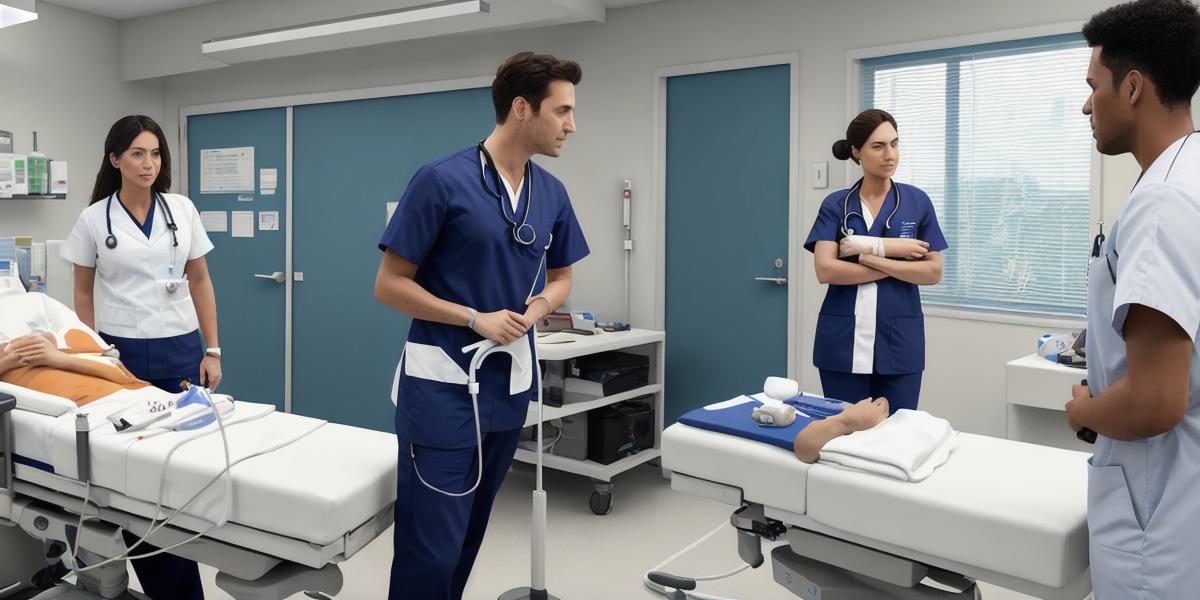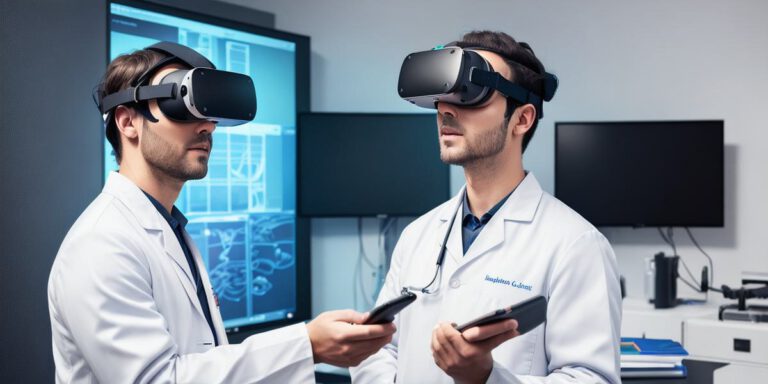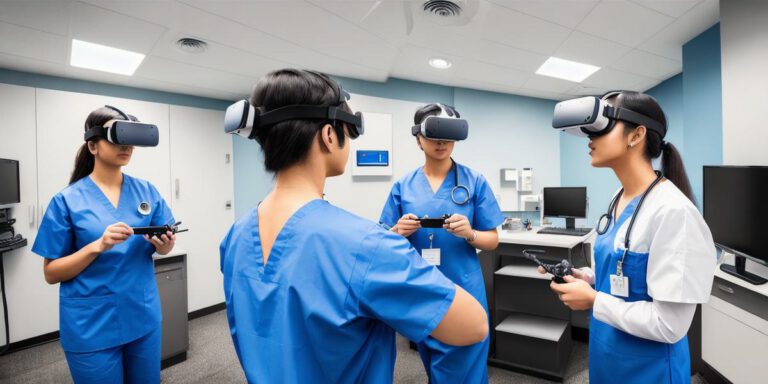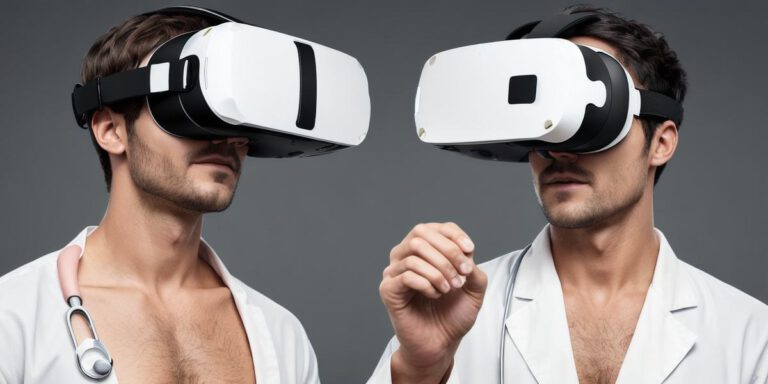Virtual Patient Encounters: Bridging the Gap between Classroom Learning and Real-World Practice with VR.

Title: Virtual Patient Encounters: Bridging the Gap between Classroom Learning and Real-World Practice with VR
Introduction
Virtual patient encounters (VPEs) are becoming increasingly popular in the field of medical education, allowing students to practice their clinical skills in a safe and controlled environment. By incorporating virtual reality (VR) technology, VPEs provide an immersive and engaging experience that can help bridge the gap between classroom learning and real-world practice. In this article, we will explore how VPEs are being used in medical education, the benefits of using VR technology, and some real-life examples of how VPEs are helping students improve their clinical skills.
The Benefits of Virtual Patient Encounters
One of the main benefits of VPEs is that they provide a safe and controlled environment for students to practice their clinical skills. This means that students can make mistakes without risking harm to real patients, which can help build confidence and reduce stress levels. Additionally, VPEs can be customized to meet the specific needs of individual students, allowing them to focus on areas where they may be struggling or need additional practice.
Another benefit of VPEs is that they can provide immediate feedback to students. This allows them to quickly identify their strengths and weaknesses, and make adjustments as needed. Furthermore, VPEs can help students develop critical thinking skills by presenting them with complex cases and challenging them to come up with the best course of action.
Real-Life Examples of Virtual Patient Encounters in Medical Education
One example of a medical school using VPEs is the University of California, San Francisco (UCSF). UCSF’s VPE program allows students to practice their clinical skills in a simulated environment that replicates real-world scenarios. Students can interact with virtual patients, perform procedures, and receive feedback from expert clinicians. This program has been shown to improve student performance on standardized exams and increase the likelihood of successful residency applications.
Another example is the use of VPEs by the Royal College of Physicians in Canada. The college’s VPE program allows physicians to practice their clinical skills in a simulated environment, which can help them prepare for high-stakes procedures and improve patient outcomes. The program has been shown to be effective in reducing errors during clinical practice, as well as improving patient satisfaction.
FAQs:
- What is the difference between virtual patient encounters (VPEs) and traditional medical training?
Virtual patient encounters use virtual reality technology to simulate real-world scenarios, allowing students to practice their clinical skills in a safe and controlled environment. Traditional medical training relies on classroom learning and hands-on experience with real patients.
- How effective are virtual patient encounters at improving clinical skills?
Studies have shown that virtual patient encounters can be as effective as traditional medical training at improving clinical skills. They provide a safe and controlled environment for students to practice, immediate feedback, and the ability to customize the experience to meet individual needs.
- Are virtual patient encounters only used in medical education?
No, virtual patient encounters are also used in other healthcare professions such as nursing, pharmacy, and allied health. They can be used to practice a wide range of clinical skills and procedures in a safe and controlled environment.
Conclusion
Virtual patient encounters are becoming an increasingly popular tool in medical education, providing students with a safe and engaging way to practice their clinical skills. By incorporating virtual reality technology, VPEs can help bridge the gap between classroom learning and real-world practice. As medical schools continue to incorporate VPEs into their curricula, we can expect to see continued improvements in student performance and patient outcomes.








